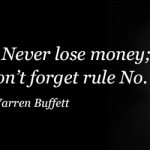How many millionaires do you know who got rich by investing in savings accounts? I put down my file.
—Robert G. Allen
My father introduced me to the stock market when I was in 6th grade. Since then I have been drawn to the fact that it was originally created by the middle class to achieve financial freedom. The first city to create a publicly traded stock was Amsterdam when the East India Company went public in 1661. Soon after, the first American stock went public, called the Nasdaq.

Decide what type of investor you are.
The first step to investing is deciding what you want to get out of it. The best way to succeed in the stock market is to know yourself. If you know you’re a person who generally likes the safer route, you should opt for things like ETFs, bonds, mutual funds, and stocks. If you know you’re a bit more of a risk taker in your life, you should opt for things like options. You are also going to have to decide how long you can keep your money in the market. Whether it’s 1 day, 1 year or 30 years, the stock market is a perfect place to learn and succeed.

Open a brokerage
The second step to financial freedom is opening a brokerage. When it comes to choosing a brokerage, you need to keep two things in mind: ease of use and commissions/fees. A good option for most people new to investing is Robinhood because it’s extremely easy to use and has little to no learning curve, and there are no commissions. Another good option containing 0 commission fees is Webull; however, a learning curve is present. Finally, the last public broker to choose is TD Ameritrade. TD Ameritrade also has no built-in hidden fees/commissions, but is harder to learn compared to an app like Robinhood. Pick a brokerage and stick with it.

Long term actions
Stock ownership is on the safer side of the stock market. When selecting companies to invest in for the long term, it is important to choose them carefully. A good way to choose these companies is to look at the ones you use every day that have also really changed the world. To name a few, Apple, Microsoft, Google and Tesla are groundbreaking companies. Additionally, you want to look at things like revenue to see whether or not a business really has a population of loyal customers. If a company has fluctuating profits, it is generally best not to invest in it as it shows signs of a risky investment. You might also find it helpful to learn how to review things like logs and charts to make sure the business is economically secure. Some companies pay shareholders a dividend or a portion of their profits, which might start accumulating in the long run, helping to grow your account. AT&T, Lumen Technologies Inc and Vornado Realty Trust are among the largest dividend-generating companies. Finally, by sticking to the basics and remembering your long-term goals, you will ensure that owning stocks will benefit your investment portfolio.
Options trading
Options trading is on the riskier side of the stock market. It requires predicting which direction a stock will go in a short period of time through things like charts, patterns, earnings, and news. The formal definition of an option is a contract that gives its owner, the holder, the right, but not the obligation, to buy or sell an underlying asset or instrument at a specific exercise price at the later on a specific date, depending on the style of the option. A simpler definition is to bet on whether a stock goes up or down and make a profit in between. Options can be extremely beneficial to an individual’s portfolio as they can be compounded very easily. There are two types of options: puts and calls. When buying a call, a trader is betting the stock to move up due to things like positive company news, chart-traceable uptrends, overvaluation, overselling, or overbought and overshooting expected profits. When buying a put option, a trader is betting on the stock to make a downward move due to factors such as chart-traceable downtrends, bad news about the company, be oversold or overbought and fall short of expected earnings. When trading options, it is important to set stop losses. If done correctly, options can help build your portfolio.

The essential
The bottom line for success in the stock market is: set a budget on how much you can set aside to invest per month, manage your portfolio responsibly, stay focused on your long-term goals, and always remember this. moment in the market is always better than market timing. If you want to learn how to start investing but are unable to put up the capital to do so, paper trading is always a good idea as well. With paper trading, you can learn how to trade correctly and safely without having to worry about repercussions such as losing large sums. In conclusion, investing is a necessary skill that all teenagers/adults should acquire in order to achieve financial freedom and never have to worry about money again.







